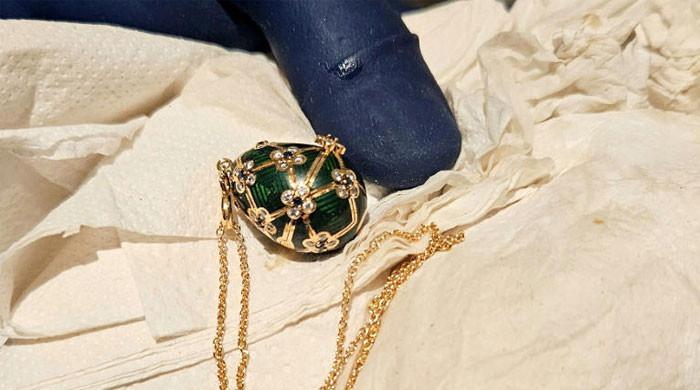Scientists unveil secret of how to make your dog pay attention to you
Test subjects included eight mongrels as well as Staffordshire terriers, Australian shepherds and poodles
February 12, 2025

Struggling to get your dog to fetch your slippers? Scientists who strapped eye-tracking helmets to a bunch of dogs have found the perfect tactic to get them to pay attention.
Both pointing and staring at an object is the best way for dog owners to get their pets to follow directions, according to a new study on Wednesday.
The owner's gaze and gesture are useful separately, "but combined they are stronger," lead study author Christoph Voelter of the University of Veterinary Medicine Vienna told AFP.
The team of Austrian researchers put headgear on 20 dogs to detect exactly where the pooches looked when they were confronted with a range of scenarios.
The test subjects included eight mongrels as well as Staffordshire terriers, Australian shepherds and poodles.
For the experiment conducted in the university's Clever Dog Lab, each canine faced a scientist on their knees. A bowl was placed on each side of the scientist, only one of which contained a hidden treat.
The dogs were then presented with five different scenarios, six times each.
The scientists would point at the bowl while staring at the dog, or point and look at the bowl at the same time, or look only at the bowl.
They even used the classic prank that many dog owners play on their pets — they pretended to throw a ball in the direction of the bowl while keeping it in their hand.
Recordings from the headgear showed that the dogs fared best when the scientist both pointed and stared at the bowl that contained the treat.
Perhaps unsurprisingly, they did the worst when the scientists pretended to throw the ball.
But do they understand?
For the researchers, this finding pointed towards the hypothesis that dogs follow human referential communication cues, rather than simply directional ones.
In other words, the dogs could understand the meaning of the information they were being given — in this case, a treat is that way —rather than just running in the direction they are being pointed.
But the researchers were careful not to hastily conclude.
Exactly how much the dogs understood what was happening remains an open question, Voelter emphasised.
"Is it for them more like an imperative directive to go somewhere? Or do they understand it more in a communicative way?" he said.
More research in this field of natural pedagogy would be needed, according to the study in the journal Proceedings of the Royal Society B: Biological Sciences.
The field normally studies how communication clues — such as pointing and looking at an object while naming it — help young children learn the names of everything around them.
The researchers are also looking into how this works for dogs, Voelter said.
The next step is figuring out whether dogs are also better at learning and memorising things "when we address them," he added.









